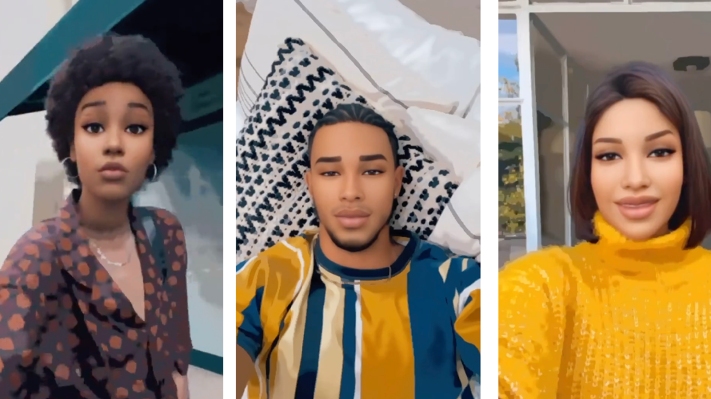Snapchat knows you want to see what you’d look like in the metaverse

Snapchat knows you want to see what you’d look like in the metaverse
Snapchat released an Avatar lens AR filter today, which makes you look like a Sims character. Or, in more modern parlance, it makes you look like what you’d look like in the metaverse.
To use the lens, open your camera in the Snapchat app to scan the QR code on Snapchat’s website, then look at how scarily smooth your skin is in the metaverse, where freckles and acne evidently do not exist.
A new Snapchat lens isn’t inherently notable, especially as the company goes all-in on augmented reality — but this is a continuation of a years-long, on-and-off viral trend. And if the past is any indication, it’ll probably go viral and crop up on TikTok soon.
In August 2020, Snapchat released the Cartoon Face lens, which users realized could be used to “Disneyfy” their pets — the tag #disneydog jumped over to TikTok to get 40.9 million views.

Then, Snapchat struck viral gold again that December when it released the Cartoon lens, which rendered more even realistic results for human faces than the previous iteration.
But the app keeps manufacturing slightly improved versions of this trend, which end up going viral as well. Humans are so predictable.
In June of this year, the Disney-like trend struck again with the Cartoon Style 3D lens, which earned 2.8 billion impressions in its first week after release.
And now, we’ve arrived at the Avatar lens, which also makes your clothing look cartoonish, not just your face. What’s next, a lens that also makes our surroundings look like something that someone built on Horizon Worlds? Probably.
Earlier this month, Snapchat hosted Lens Fest, a celebration of the app’s AR technology. The company announced at the event that there are over 250,000 lens creators from more than 200 countries.

Combined, they have made 2.5 million lenses that have been viewed more than 3.5 trillion times. Meanwhile, on Snapchat’s TikTok clone Spotlight, the app awarded 12,000 creators a total of $250 million for their posts. The company says that over 65% of Spotlight submissions use one of Snapchat’s creative tools or lenses.
Companies like Niantic and Snapchat think that augmented reality is better suited to build the metaverse than virtual reality. But even for headset-loving tech giants like Meta, AR can help make us actually look like ourselves in the metaverse.
The Snapchat Avatar filter makes me look like an unrealistic, Barbie-esque version of myself, yet it still feels a bit more personalized than my Meta Horizon avatar, which just looks like any random white woman with brown hair and glasses.
Still, there’s something disorienting about seeing ourselves like this — my avatar in the Snapchat lens looks like me, but my eyebrows become perfectly manicured, like I just got them tediously threaded by a beautician.
My lips become fuller, like I’m wearing a plumping lip gloss, but I didn’t put on any makeup today.

In the VR metaverse, we need some sort of avatar to represent us, because otherwise, we’re just an invisible blob. Startups like Ready Player Me, Spatial and Genies are cropping up to help us craft our virtual personas.
But in augmented reality, the premise is to alter the real world in a way that helps us engage more deeply in it.
Snapchat’s AR filters are fun, but we don’t really need avatars in the AR metaverse, and maybe that’s a good thing — we already know how dangerous it can be when we only present the best versions of ourselves online.
Source: TechCrunch




